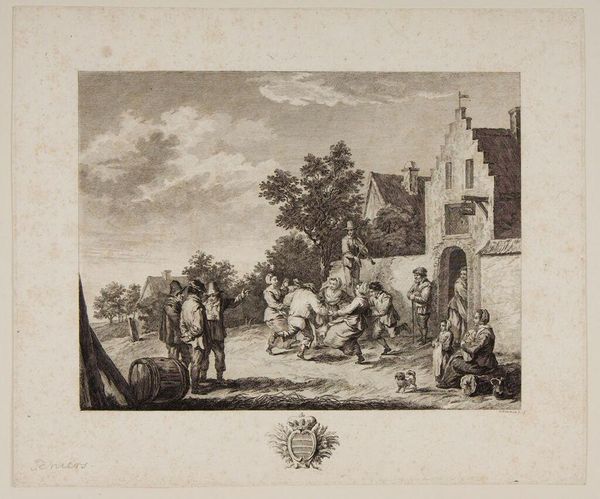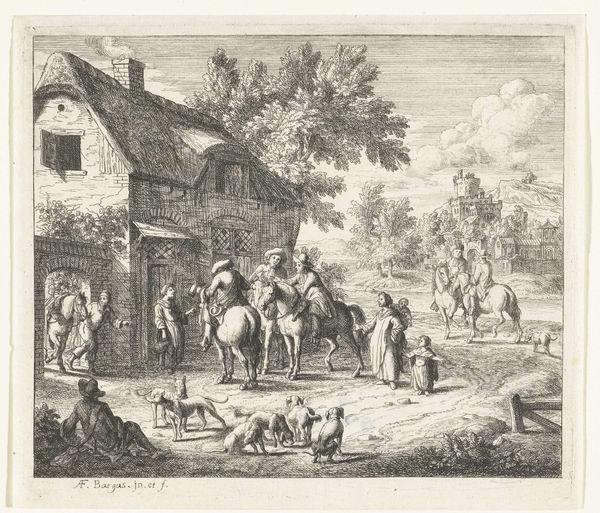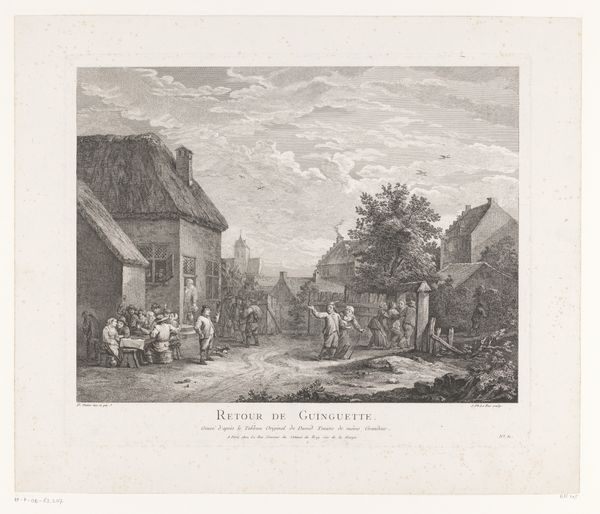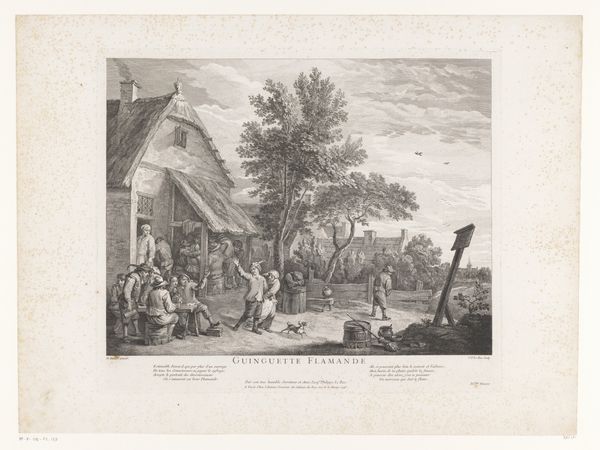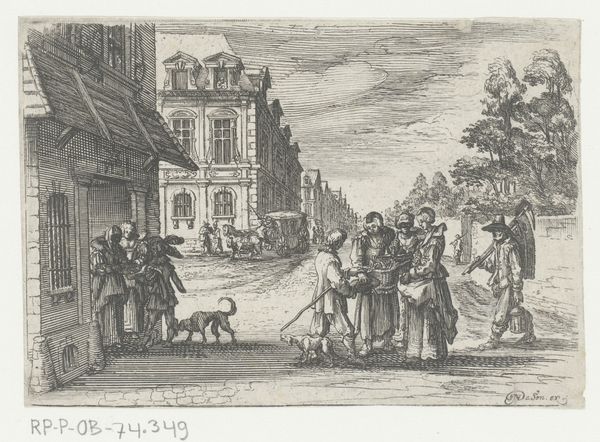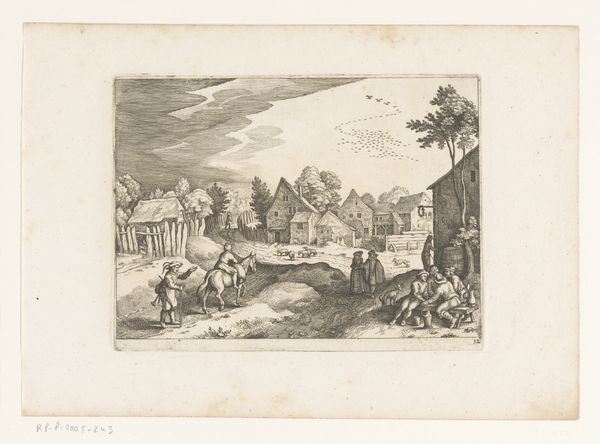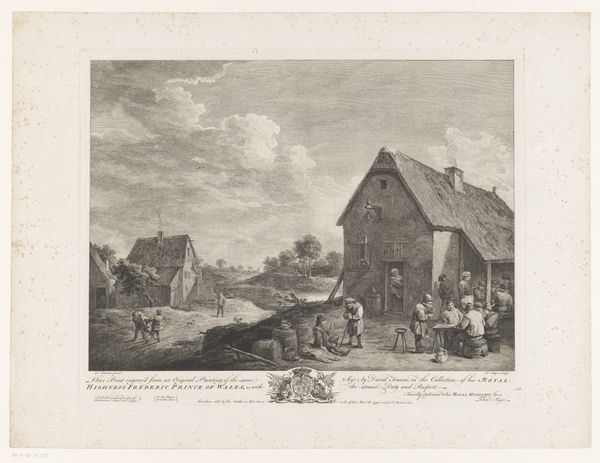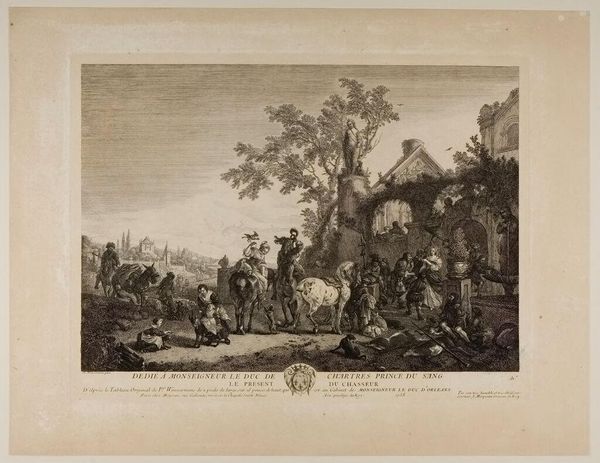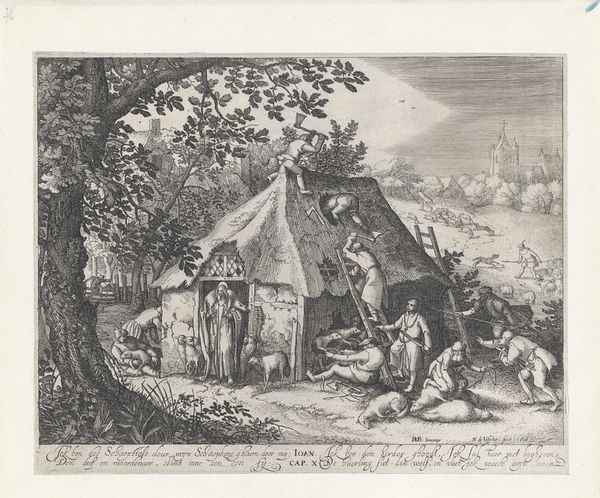
engraving
#
baroque
#
old engraving style
#
landscape
#
cityscape
#
genre-painting
#
engraving
Dimensions: height 233 mm, width 268 mm
Copyright: Rijks Museum: Open Domain
This print, "Boerenfeest voor een herberg," was made by Jacques Philippe Le Bas in the 18th century, using the technique of etching. The image is made of a series of tiny lines, bitten into a copper plate with acid, then inked and printed onto paper. Etching, while a means of mechanical reproduction, was also a highly skilled craft. Le Bas, as an engraver, was part of a system driven by market demand, catering to a public eager for images. The scene depicts a lively peasant festival outside a tavern. We see people drinking, dancing, and reveling. The very subject of the print—the celebration and gathering of the working class—speaks to a broader cultural interest in the lives and activities of everyday people. By focusing on the making of this print, we can understand it not just as an artistic expression, but as a product of skilled labor, market forces, and social observation, all deeply intertwined.
Comments
No comments
Be the first to comment and join the conversation on the ultimate creative platform.
